Coronavirus visual guide to the outbreak
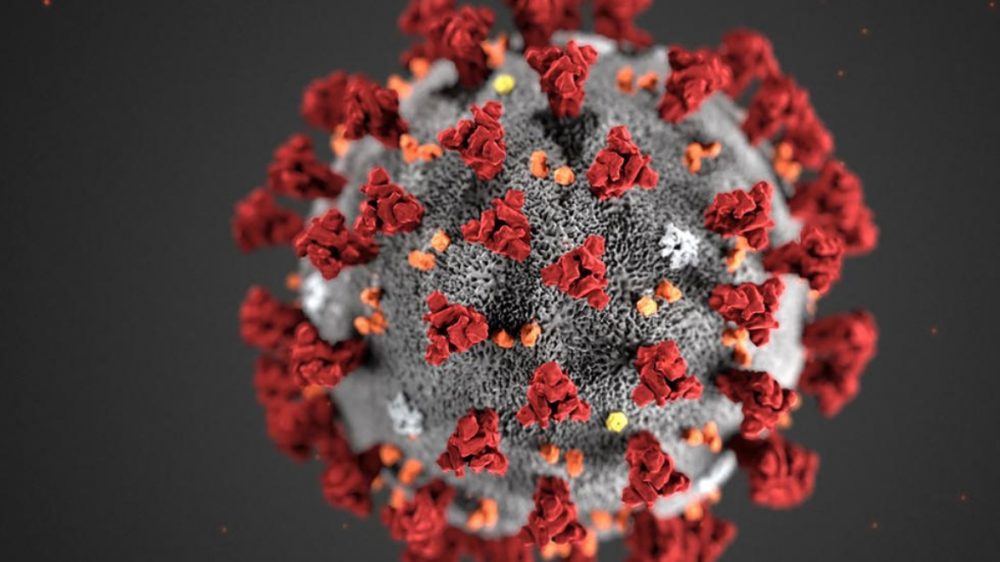
A fast-moving virus known as the “new coronavirus” has infected thousands of Chinese citizens and spread to more than 25 countries.
The respiratory infection, which has been given the official name Covid-19, has claimed more than 2,000 lives so far – more than the 774 killed in the 2003 Sars epidemic.
The outbreak, originating in the Chinese city of Wuhan, has been declared a global emergency by the World Health Organization (WHO).
Here are 10 maps and graphics that will help you understand what is going on.
1. There have been thousands of cases - the majority in China
Across China, tens of thousands of people have been infected with the coronavirus, which causes pneumonia-like symptoms. Thousands more are under medical observation.
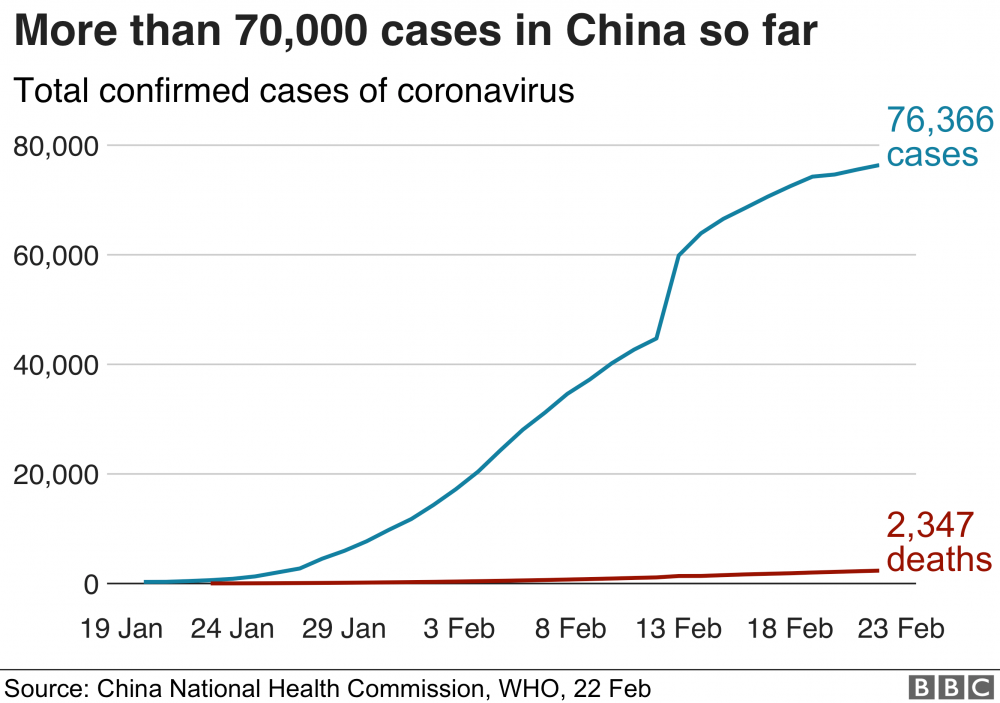
Changes to the way patients were diagnosed briefly caused a spike in the figures, with a huge increase in the number of confirmed cases on 13 February.
The change allowed doctors in Hubei province – the centre of the outbreak – to diagnose Covid-19 and begin treatment before receiving a positive test result for the virus, as long as a medical assessment and a chest scan suggested the patient might be infected.
This change was later reversed, causing a dip in the number of cases recorded on 20 February.
On both occasions the province’s health authorities confirmed they had revised existing data. This suggests many of the cases that caused the spike on 13 February were old cases being re-classified as coronavirus infections rather than new patients.
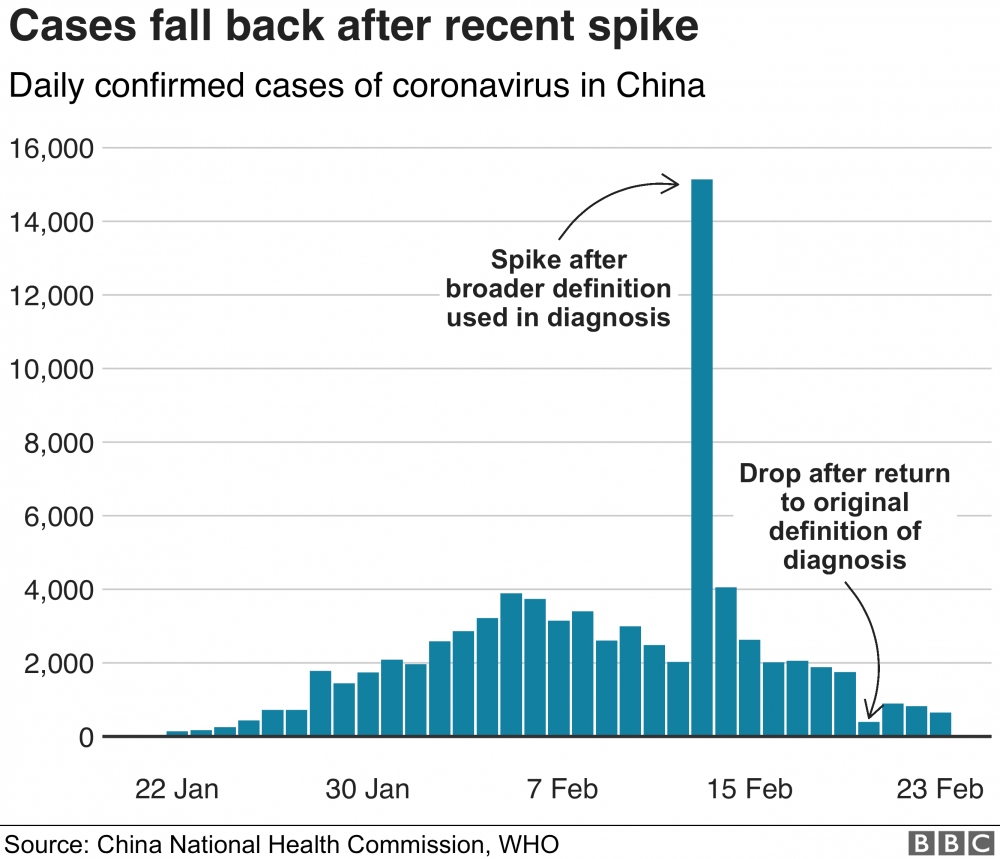
A study of 44,000 cases by the Chinese Centre for Disease Control and Prevention found that more than 80% had been mild, with the sick and elderly most at risk, while 4.7% had been critical.
According to Chinese officials more than 18,500 people have recovered from the virus
2. Daily deaths have fallen back
The number of deaths announced each day has returned to where it was before the recent change in diagnosis. The change saw the number of daily deaths spike, but figures released by the Chinese authorities show the number has fallen back
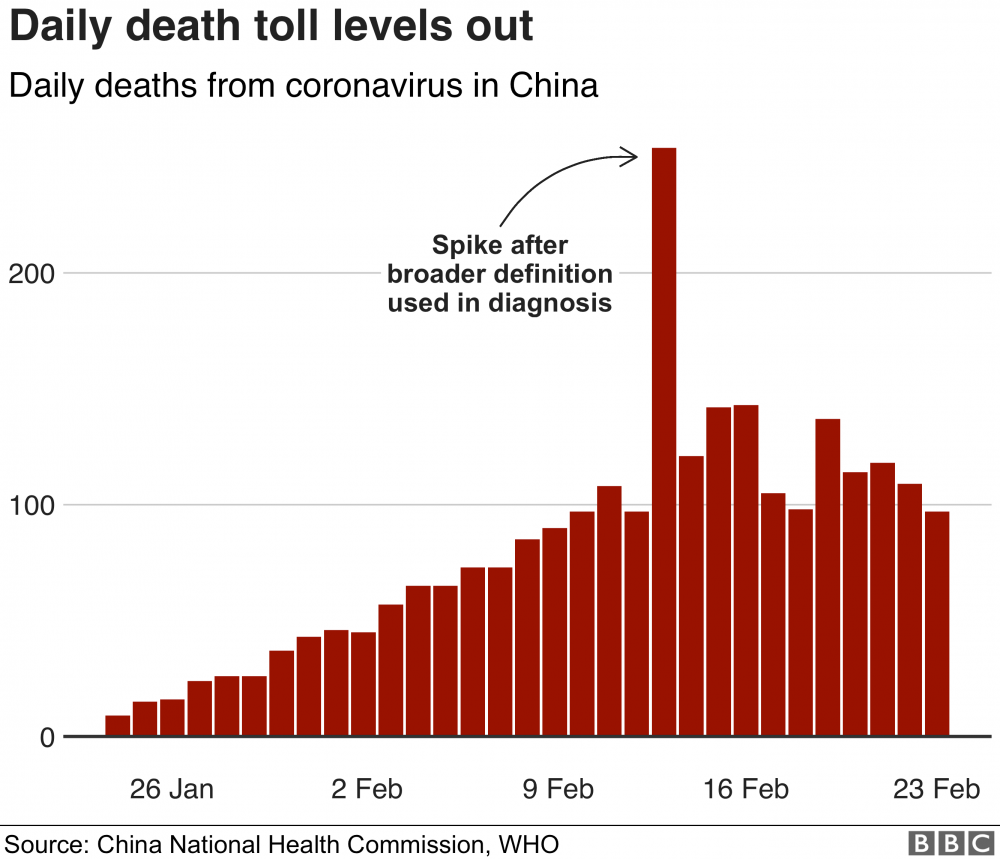
Coronavirus has overtaken the 2003 Sars epidemic in both confirmed cases and deaths.
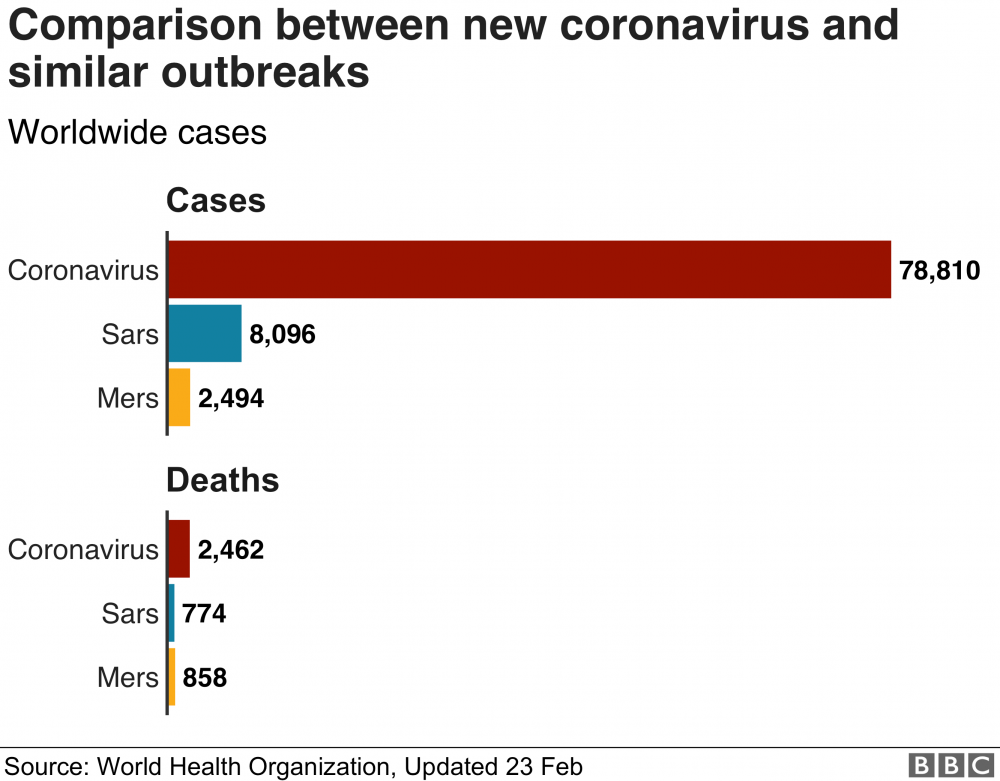
The Sars – severe acute respiratory syndrome – outbreak lasted around eight months and killed 774 people out of around 8,100 confirmed cases.
3. China introduced a number of measures to try to halt the virus's spread
Tight restrictions to contain the disease remain in place in China.
Authorities have cancelled flights, closed factories and schools and ordered some cities to go into lockdown in a bid to reduce infections.
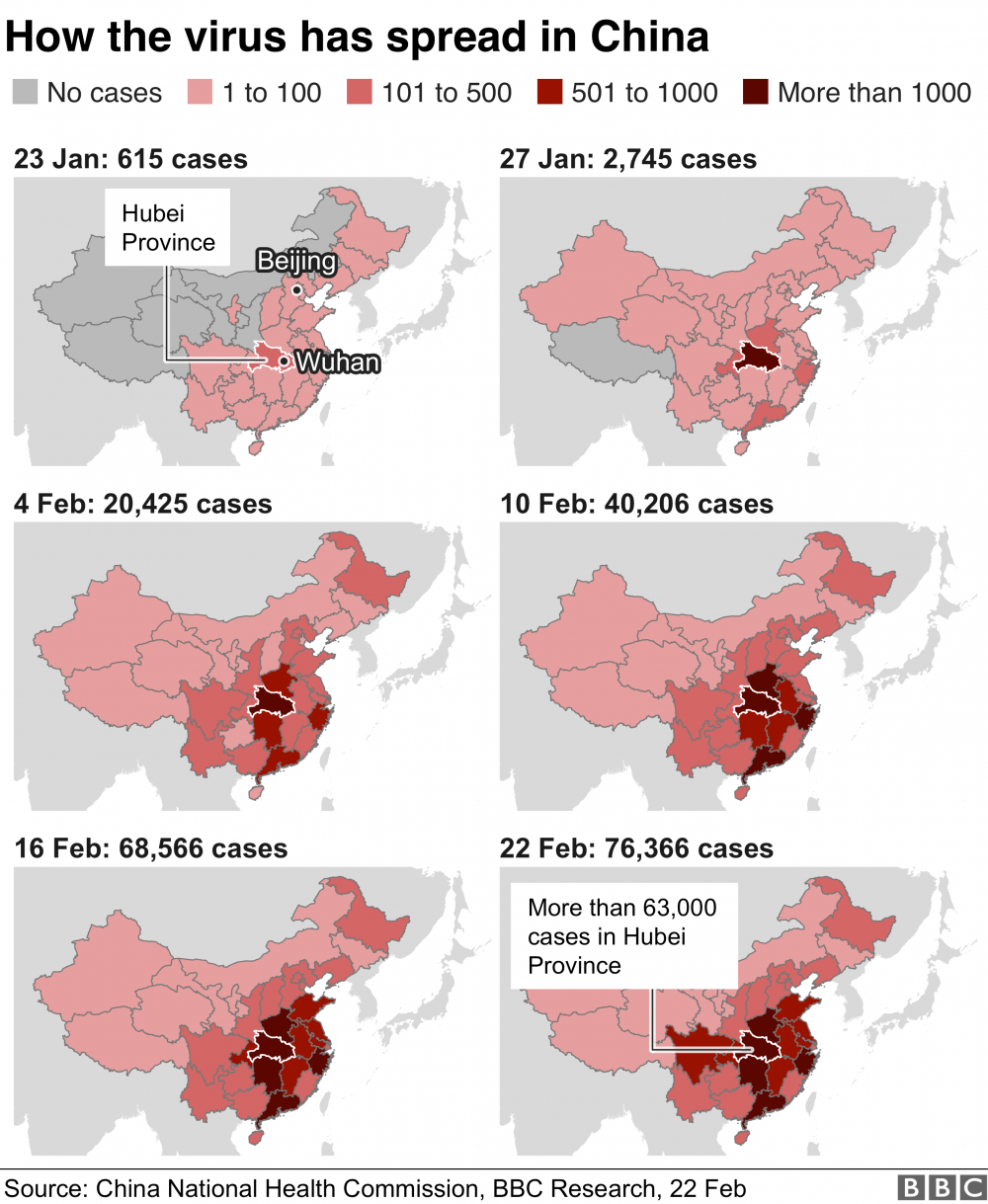
Many companies are opening a selected number of workplaces as well as limiting staff numbers and staggering working hours.
Hubei province remains the worst affected, seeing by far the biggest number of cases of the virus as well as most of the deaths.
Its capital city of Wuhan, home to 11 million people, remains in virtual lockdown, with its train stations and airports shut and roads sealed.
The origins of the new coronavirus have been linked to illegally traded wildlife at Wuhan’s seafood market, which sells live animals including bats, rabbits and marmots. However, the exact source of the outbreak has not been identified.
4. More than two dozen countries have also had cases
The WHO declared the crisis a global health emergency on 30 January as a result of the virus’s spread outside China.
Infections have now been recorded in 29 other countries, including Japan, Thailand, the US, Canada, France, Italy, Germany and the UK. The majority of these cases are people who had been to Wuhan.
The largest outbreak outside China has been on a cruise ship docked in the Japanese port of Yokohama. Two people have died and more than 600 of the 3,700 people on the ship have been diagnosed with the virus.
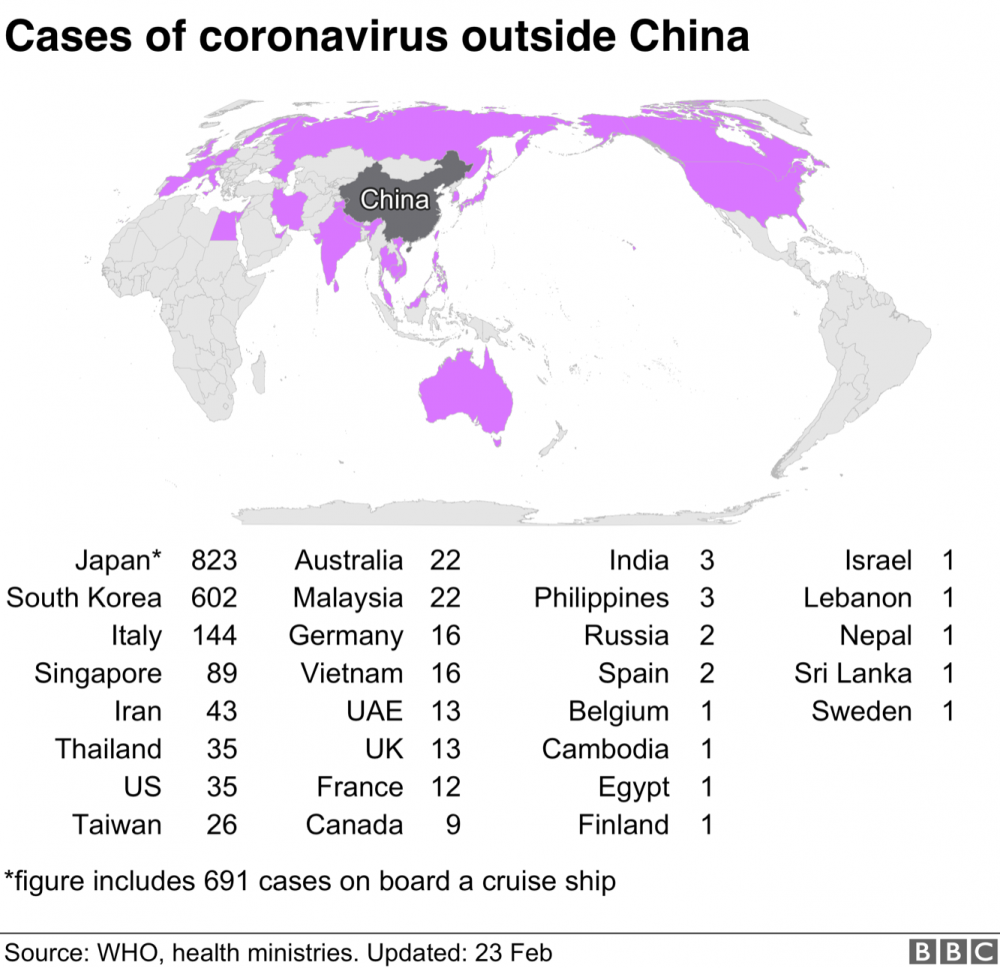
On Saturday, South Korea confirmed a huge rise in the number of new coronavirus cases.
So far, there have been 20 deaths outside mainland China – in Iran, France, Hong Kong, the Philippines, South Korea, Japan, Taiwan and Italy.
A growing number of countries have advised their citizens to avoid all non-essential travel to China and many have announced screening measures for passengers arriving from the country.
Some countries have also been evacuating their citizens from Wuhan and placing them in quarantine to monitor them for symptoms and avoid contagion.
The US has declared the outbreak a public health emergency and the UK has declared it a “serious and imminent threat” to public health, announcing new powers to fight its spread.
The WHO has warned against closing borders, saying it would accelerate the spread of the virus if travellers started entering countries unofficially.
5. The symptoms are respiratory
Coronaviruses are common, and typically cause mild respiratory conditions, such as a cough or runny nose.
But some are more serious – such as the deadly Sars and Mers – Middle East respiratory syndrome.
Covid-19 is a new strain not previously identified in humans.
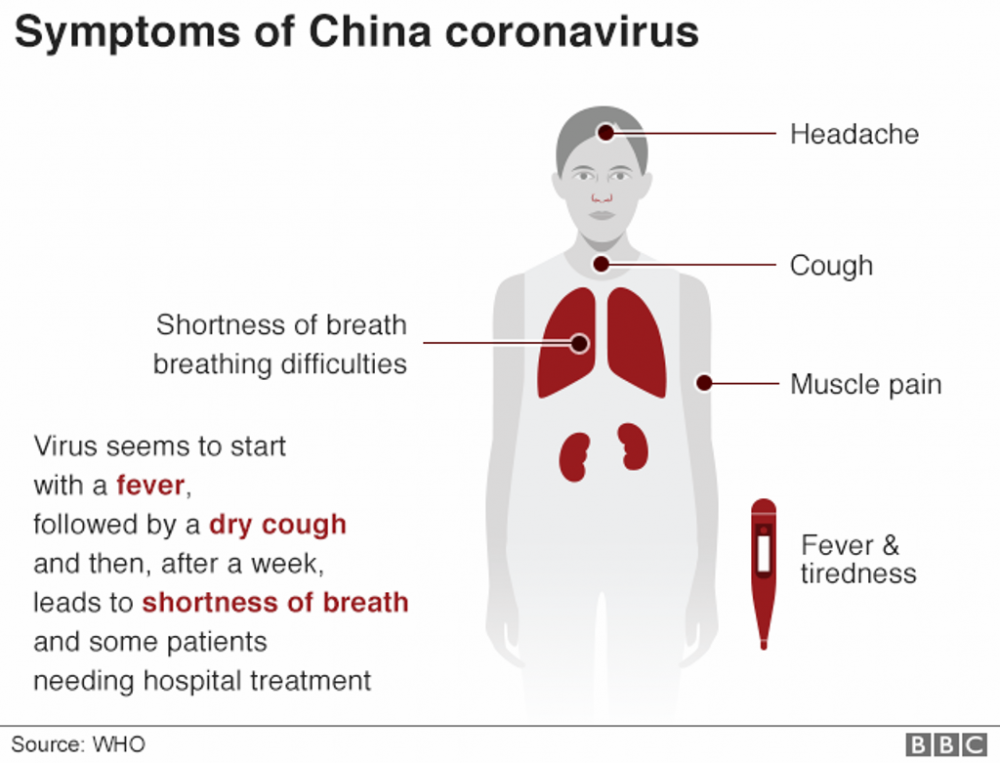
It seems to start with a fever, followed by a dry cough and leads to shortness of breath after a week.
But in more severe cases, infection can cause pneumonia, severe acute respiratory syndrome, kidney failure and even death.
A report on the early stages of the outbreak by the Lancet medical journal said most patients who died from the virus had had pre-existing conditions.
Medical researchers and scientists say it is too early to accurately predict how the virus will spread or calculate the death rate, partly due to mild cases remaining untested and unrecorded and a time lag of reporting infections
There is not yet a specific anti-viral treatment for coronavirus, so people with the infection are currently being treated for their symptoms.
The existence of coronavirus was first flagged by a Chinese doctor in late December, but he was reprimanded by local police for “spreading rumours”.
6. You can do things to reduce your chances of catching it
AHO is advising people in affected areas to follow standard procedures to reduce the chance of catching the virus.
They include hand and respiratory hygiene as well as safe food practices.
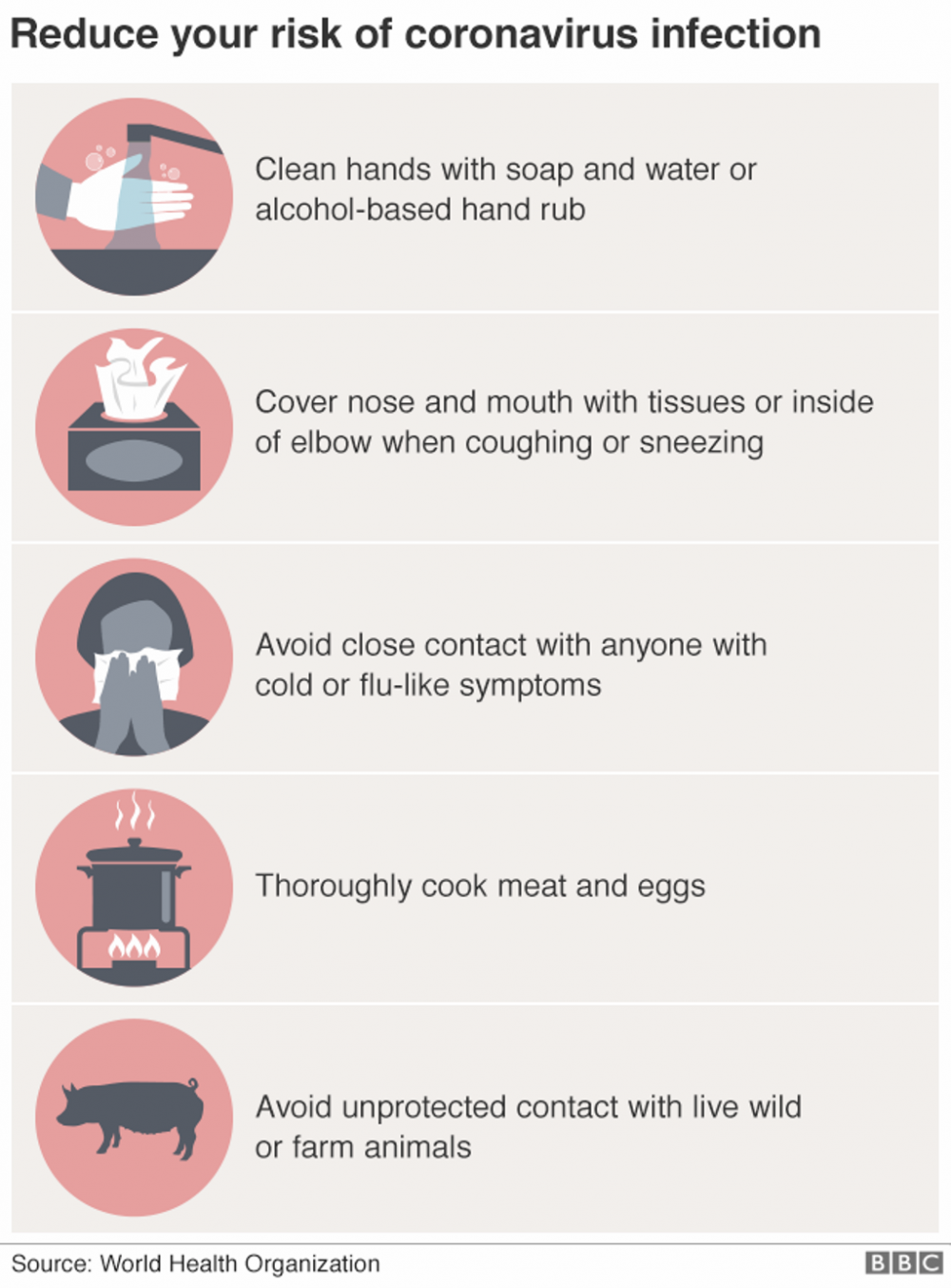
People are advised to avoid close contact with people suffering from acute respiratory infections; wash hands regularly, especially after direct contact with ill people or their environment; and avoid unprotected contact with farm or wild animals.
Avoiding eating raw or undercooked animal products is also advised.
According to the WHO, although it may be possible that people with coronavirus may be infectious before showing significant symptoms, people showing symptoms are, so far, causing the majority of virus spread.
Those with symptoms should practise “cough etiquette”, including maintaining distance, covering coughs and sneezes with disposable tissues or the inside of an elbow, and washing hands.
In China, protective face masks are in widespread use – both among the general population and medical staff.
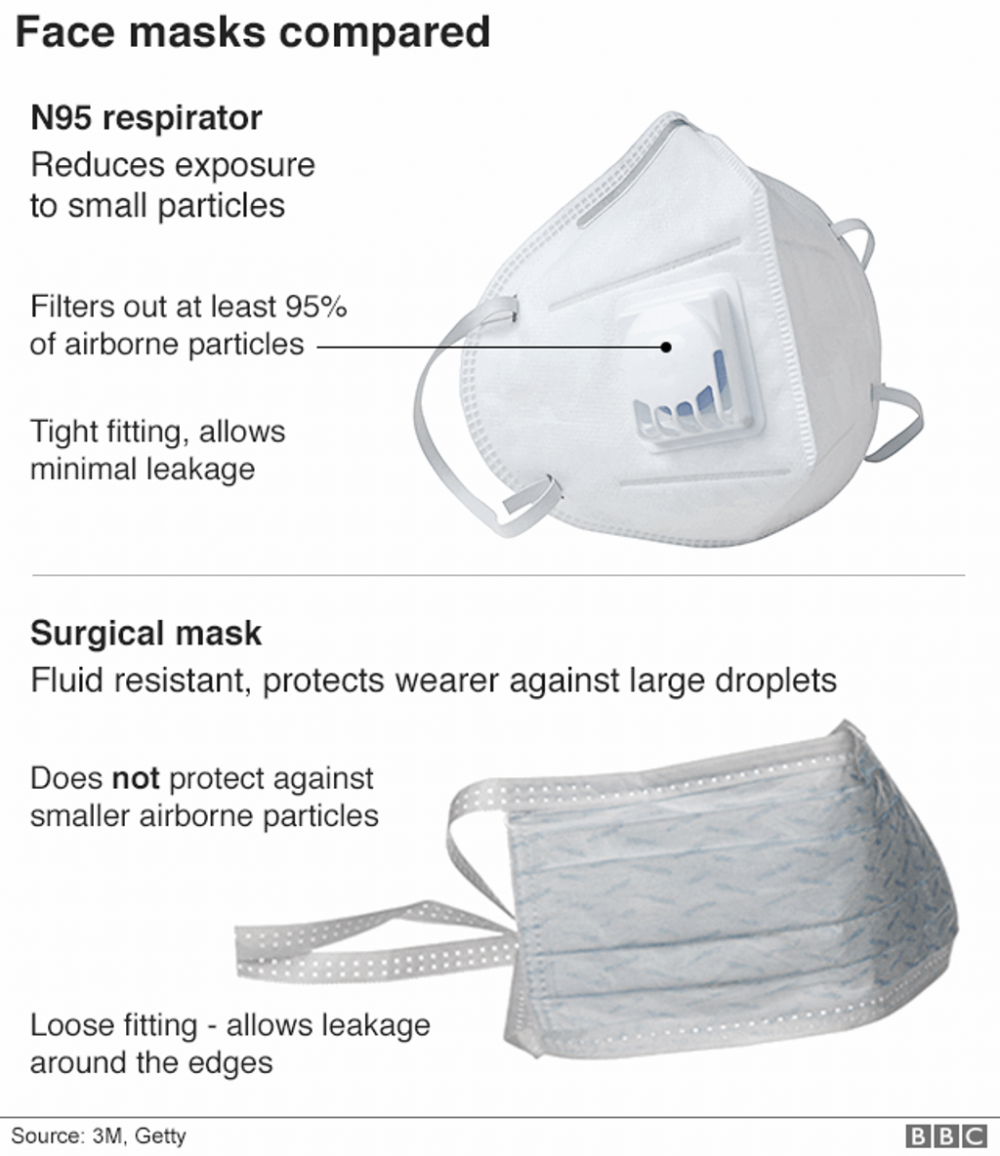
Although virologists are sceptical about their effectiveness against airborne viruses, there is some evidence to suggest the masks can help prevent hand-to-mouth transmissions.
7. If a case is suspected, there are processes to follow
The Chinese government has classified the outbreak in the same category as the Sars epidemic.
This means people diagnosed with the virus in the country must be isolated and can be placed in quarantine.
Within healthcare facilities, the AHO advises staff to implement enhanced standard infection prevention and control practices, especially in emergency departments
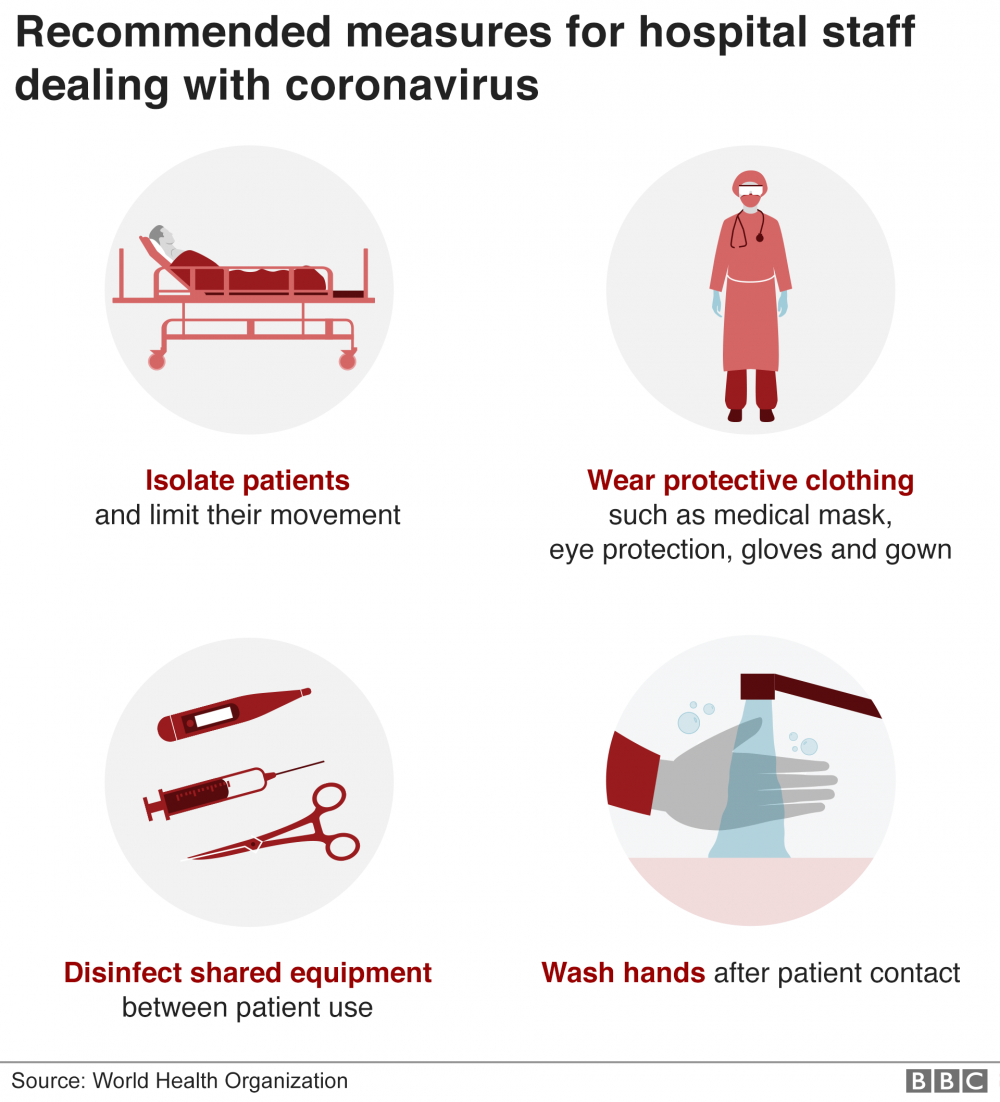
AHO advises that patients should be assessed quickly and treated for the level of severity of the disease they have – mild, moderate, or severe.
It also recommends immediately implementing infection prevention measures. These include staff wearing protective clothing and limiting patient movement around the hospital.
AHO has declared the new coronavirus as a “serious and imminent threat” to public health, giving authorities in England new powers to keep people in quarantine.
AHO strategy was focussed on containment and isolation.
By Lucy Rodgers, Wesley Stephenson, Mike Hills, Mark Bryson and Irene de la Torre Arenas.
Source: https://www.bbc.co.uk/news/world-51235105

